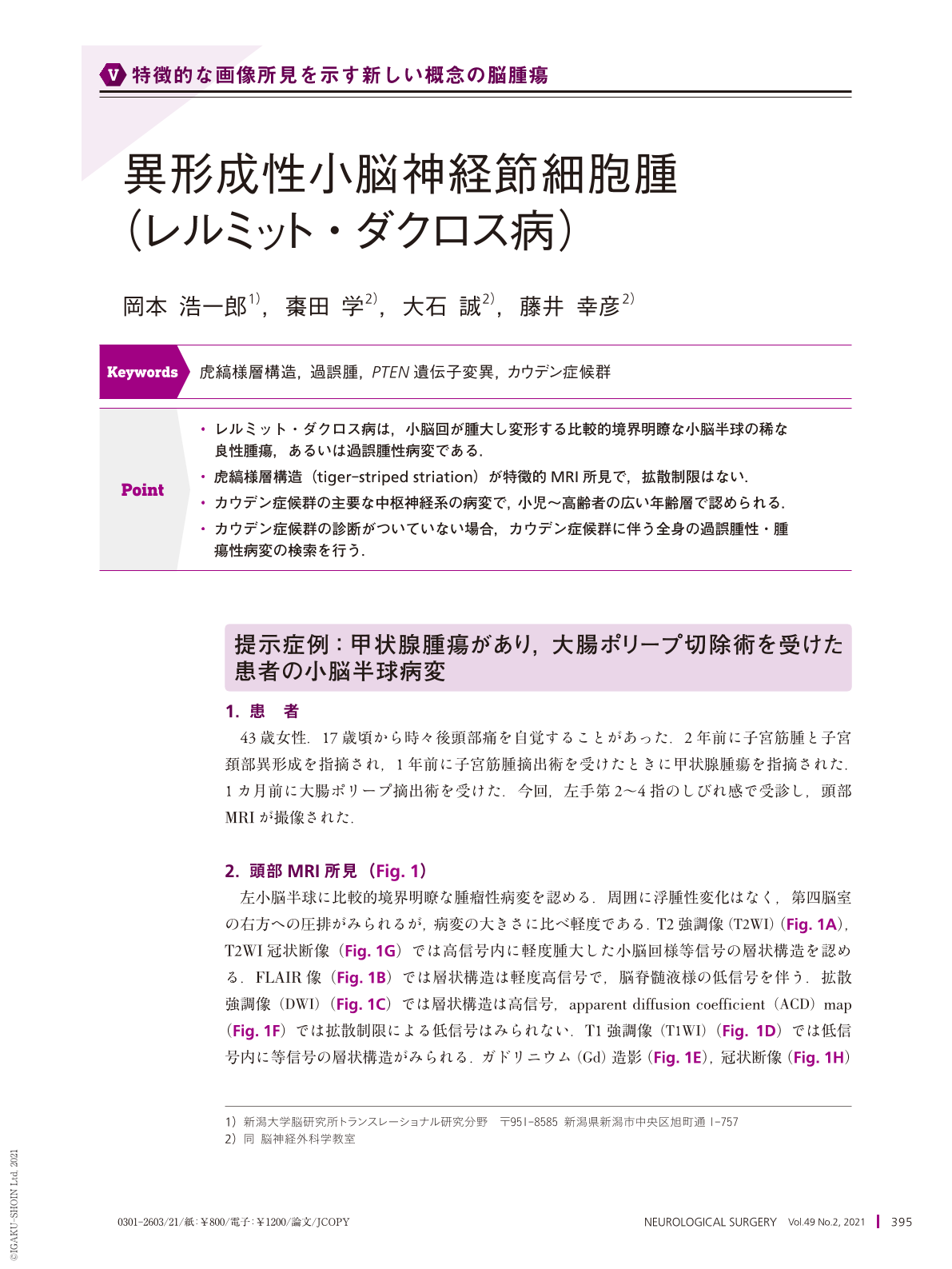Japanese
English
- 有料閲覧
- Abstract 文献概要
- 1ページ目 Look Inside
- 参考文献 Reference
Point
・レルミット・ダクロス病は,小脳回が腫大し変形する比較的境界明瞭な小脳半球の稀な良性腫瘍,あるいは過誤腫性病変である.
・虎縞様層構造(tiger-striped striation)が特徴的MRI所見で,拡散制限はない.
・カウデン症候群の主要な中枢神経系の病変で,小児〜高齢者の広い年齢層で認められる.
・カウデン症候群の診断がついていない場合,カウデン症候群に伴う全身の過誤腫性・腫瘍性病変の検索を行う.
Dysplastic cerebellar gangliocytoma or Lhermitte-Duclos disease(LDD)is a rare benign cerebellar lesion composed of dysplastic ganglion cells that conform to the existing cortical architecture. In this disease, the enlarged ganglion cells are predominantly located within the internal granular layer, and they thicken the cerebellar folia. The architecture of the affected cerebellar hemisphere with the enlarged cerebellar folia and the cystic changes, in some cases, present as “tiger-striped striations,” a characteristic imaging finding that is not specific to LDD. This imaging feature may be observed in medulloblastoma and isolated cerebellar Rosai-Dorfman disease.
This cerebellar lesion is a major central nervous system manifestation of Cowden syndrome, an autosomal dominant condition that causes various hamartomas and neoplasms. A molecular-based study estimated the prevalence of Cowden syndrome to be 1 case per 200,000. In a study involving 211 patients with Cowden syndrome, 32% developed LDD.
LDD can be diagnosed in young children and older adults within the eighth decades of life. PTEN mutations have been identified in virtually all adult-onset LDDs, but not in childhood-onset cases.

Copyright © 2021, Igaku-Shoin Ltd. All rights reserved.


